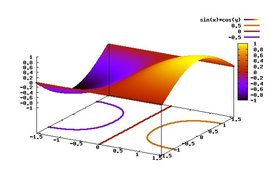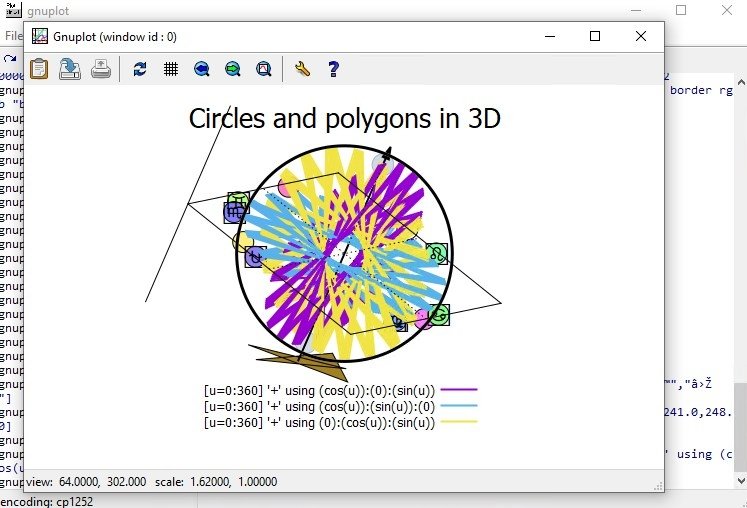Gnuplot is a widely used scientific plotting program from the unix world that is free and open source. It can produce most of the types of plots that a scientist might require on a dazzling array of output devices. The Octave GUI and graphics will display seamlessly on the Mac via the Mac's native X-windows server, while the server runs headless. The recommended configuration ensures that by default user files written by the GUI are in a folder shared with the Mac's filesystem, and the VM suspends automatically when the user quits the GUI.
I would like to try it.
- Version: 2.50.01
- File Size: 3.8M
- Systems: Mac OS X 10.9+
Gnuplot for Mac is a portable command-line driven graphing utility for macOS and many other platforms.The source code is copyrighted but freely distributed (i.e., you don't have to pay for it). A large collection of Gnuplot examples, all on one page. I needed to use Gnuplot a little bit over the last few days, mostly to create 2D line charts, and these are my brief notes on how to get started with Gnuplot. Scientific Plotting on Mac OS X (Intel) using Gnuplot and Plot August 2, 2006 at 11:00 am Filed under Mac, Tips and Tricks After having successfully moved my LaTeX publishing environment to the new Macbook, all that was left was a working Intel build of gnuplot 4.1.0 (which has some nice new features over 4.0). Gnuplot is a streamlined OS X plotting application that comes with support for 2D and 3D plots, scripting, nonlinear least-squares fitting, functions and more. The gnuplot tool is able to draw.
- >
- >
- >
This article is teaching you how to correctly remove gnuplot 5.0.3 in Mac OS X. Before performing the removal, let’s get to know more about Mac OS X, so that we will be able to safely, completely remove gnuplot 5.0.3.
Over the years, Mac OS has never given up on the desktop market. Evolved from Mac OS 9 to X, it went through eleven significant upgrades -- Cheetah, Puma, Jaguar, Panther, Tiger, Leopard, Snow Leopard, Lion, Mountain Lion, Mavericks, and Yosemite, becoming more and more adaptive and user-friendly. The El Capitandu version in particular, fixed many bugs while a lot of new features have been added, and system security has been greatly enhanced as well. From these improvements, more and more developers find business opportunities and engage in designing apps for Mac. However, due to the distinctiveness of Mac OS X, its uninstallation can be quite distinctive to former Windows users, who might need a bit more operating system knowledge instead of simply dropping an app down the Trash.

So, how should we correctly, completely remove gnuplot 5.0.3?
Download Mac App RemoverGenerally, Manual Removal Requires the Following Steps:
Step 1: open the Activity Monitor, and search for the processes related to gnuplot 5.0.3, then quit them one by one.
Step 2: Check whether gnuplot 5.0.3 has its own built-in uninstaller. If it does, we use it. How to find its uninstaller?
- 2.1 Go to Find -> Go -> Application
- 2.2 Locate gnuplot 5.0.3, right-click on it then select Show Package Contents
- 2.3 See if there is any file with “uninstall” or “remove” in its name, which should be the built-in uninstaller of an application. And we run it to activate the removal.
Step 3: If gnuplot 5.0.3 doesn’t have its own uninstaller or you can’t find it, the operations can be a bit complicated.
Download Mac App Remover- 3.1 In the upper-right corner of your screen, click the Magnifier icon to open Spotlight Search. Type “gnuplot 5.0.3” in the box, and you will see the related folder(s)/file(s). According to the result, respectively drag it (them) to the Trash.
- 3.2 To fully remove gnuplot 5.0.3, we need to check the following folders for its remaining files, whose name should contain “gnuplot 5.0.3.”
- 3.2.1 Application Support
- 3.2.2 Caches
- 3.2.3 Containers
- 3.2.4 Frameworks
- 3.2.5 Logs
- 3.2.6 Preferences
- 3.2.7 Saved Application State
- 3.2.8 WebKit
- 3.3 Some files of gnuplot 5.0.3 could be set as “Read only”, so to find those files we shall change the settings to “Everyone > Read & Write.”
Performing the above steps should perfectly remove gnuplot 5.0.3.
Although the manual uninstallation is able to remove the apps you don’t want, it may take much time, and not everyone is tech-savvy enough to do that without involving in possible risks, for example, the mistaken deletion that leads to system crash.
Gnuplot Mac Set Terminal
To spare yourself the unsafe elements, you might as well try out a professional third-part tool, like MacRemover -- a small-sized but powerful Mac App uninstaller that supports the One Click Remove feature.
How to Remove gnuplot 5.0.3 with MacRemover?
Download Mac App Remover- 1> Download MacRemover.
- 2> Run it, select gnuplot 5.0.3 in the list of installed applications, then click the “Run Analysis” button.
- 3> MacRemover will analyze the installation information of gnuplot 5.0.3.
- 4> After the analysis, click “Complete Uninstall” to perfectly remove gnuplot 5.0.3.
Manual Removal & Auto Removal - How to Choose?
Gnuplot For Mac Os X
- 1> If you are a sophisticated user of Mac OS X and know well of its operating theory, then you can consider manual removal.
- 2> If you are a newbie to Mac OS X, then a third-party removal tool is suggested. Because these tools can automatically analyze & recognize the files which need to be deleted, and save a lot of time that you can spend working on your Mac.
Gnuplot For Mac Download
 Download Mac App Remover
Download Mac App Remover